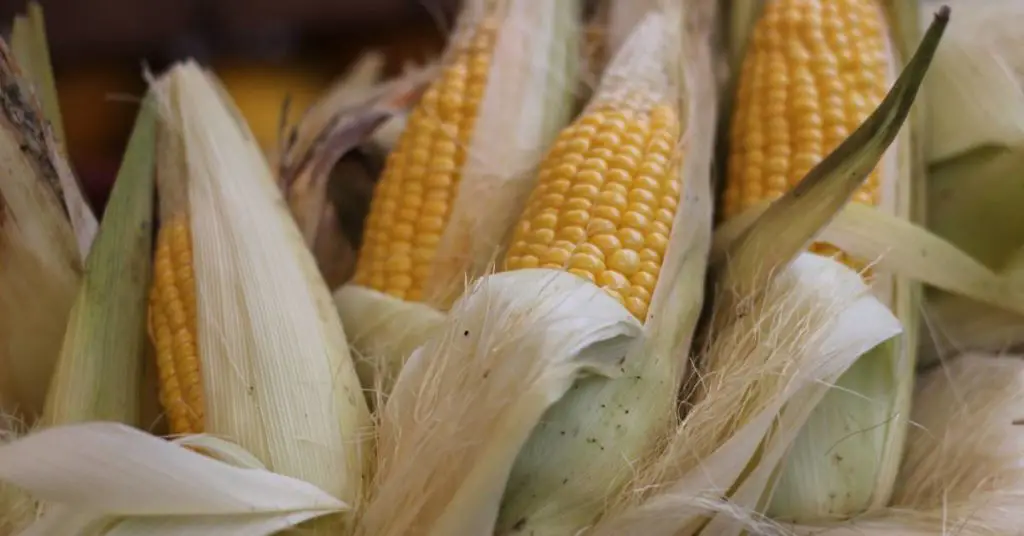Is corn low histamine and is it safe to eat if you have histamine intolerance? If you have histamine intolerance, you should question the histamine levels in various food items, including corn.
The best approach to reducing histamine intolerance symptoms is to avoid eating foods that increase your body’s histamine burden.
Let’s dive into the topic of corn and its histamine content to shed light on whether corn is low histamine or not. Let’s explore the facts and debunk any misconceptions surrounding this popular grain.
Understanding Histamine Intolerance and Corn
Before delving into corn’s histamine levels, let’s briefly review the concept of histamine intolerance. Histamine is a naturally occurring compound in our bodies, involved in various physiological processes.
However, some individuals have difficulty breaking down histamine due to a deficiency in the enzyme diamine oxidase (DAO) or other factors. (3, 5)
Consequently, excessive histamine levels can lead to symptoms such as headaches, digestive issues, skin reactions, and respiratory problems. (2)
Digestive issues are another prevalent symptom of histamine intolerance. Some experience abdominal pain, bloating, diarrhea, or nausea after consuming foods high in histamine. Needless to say, these symptoms can be quite disruptive!
Histamine intolerance can also manifest in skin reactions, causing itching, hives, redness, or swelling. It’s no wonder that many people with histamine intolerance think they have an allergy.
In severe cases, histamine-induced skin reactions can even escalate to more serious conditions such as angioedema, characterized by deeper swelling beneath the skin.
Respiratory problems are another issue with histamine intolerance. When your body’s histamine level rises, it can set off allergic-like reactions, resulting in bothersome symptoms.
You may find yourself sneezing frequently, battling nasal congestion, dealing with a runny nose, or experiencing troublesome wheezing.
If you already have pre-existing respiratory conditions like asthma, histamine-induced respiratory problems can further intensify your symptoms and present additional challenges.
Be aware of these potential effects and take proactive measures to manage your histamine levels and minimize the impact on your respiratory health.
Also know that some people are allergic to corn and release histamine when they consume it. (4)

Histamine Content in Corn: What You Need to Know
So, now to the question: Is corn low histamine? There is a common misconception that corn is a high histamine food, leading some people with histamine intolerance to avoid it altogether. However, corn is generally considered low histamine.
Freshly harvested and properly stored corn typically contains low levels of histamine. However, there are some precautions if you have histamine intolerance.
For one, corn can be hard for some people to digest. Corn has a cellulose husk that humans lack the enzymes to break down corn effectively, so it can stay in your stomach longer and cause digestive issues.(7)
Nevertheless, individual reactions may vary, and it is essential to listen to your body’s signals and consult with a healthcare professional for personalized advice.
Although fresh corn contains low levels of histamine, a study published in Food Chemistry found that canned and dried corn contains other biogenic amines that may be problematic for some people. Takeaways from the study: (1)
- Fresh corn contains putrescine and spermidine
- Germinated corn contains putrescine ,spermidine, and spermine
- Canned corn contains putrescine
- Dried corn contains spermine
Factors That Affect Histamine Levels in Corn
Although corn itself is not inherently high in histamine, certain factors can influence histamine levels in corn-based products. One factor is the ripeness of the corn.
As corn ripens, its histamine content can increase slightly. Therefore, consume corn while it is fresh and at its peak. Additionally, the processing and storage of corn products can impact histamine levels.
Fermented or aged corn products, such as cornmeal or corn-based alcoholic beverages, may have higher histamine levels due to the fermentation process.
Checking labels and opting for fresher, minimally processed corn products can help minimize histamine exposure. Find out whether grits are low histamine.
Enjoying Corn with Histamine Intolerance: Tips and Considerations
If you have histamine intolerance, adding corn to your plate requires a mindful approach. Opt for fresh corn and consume it shortly after harvest, to ensure lower histamine levels.
If you consume processed corn products, choose those with minimal fermentation or aging. Also, pay attention to portion sizes and observing how your body responds to corn can help determine your personal tolerance level.

Keeping a Food Diary: The Importance of Tracking Histamine Intolerance Triggers
Even though fresh corn is low histamine, everyone’s a little different. So always keep a food diary to identify your personal triggers.
Histamine intolerance triggers can vary significantly among individuals, and by diligently recording everything you consume, along with any associated symptoms and their severity, you’ll start to uncover patterns.
This record will become a valuable resource in pinpointing specific food items or combinations that consistently lead to symptoms, enabling you to make tailored dietary modifications that work for you.
Another benefit of maintaining a food diary is to better understand your tolerance levels.
Histamine intolerance is not a one-size-fits-all condition, and while some individuals may tolerate small amounts of histamine-rich foods, others might need to adopt a more restrictive approach.
By carefully tracking your food intake and observing your body’s response over time, you can determine your unique threshold and strike the right balance between enjoying your favorite foods and managing your symptoms effectively.
Histamine can hide in unexpected places. Keeping a food diary helps you recognize hidden sources of histamine, even beyond the obvious culprits like aged cheeses or fermented foods. (6)
By cross-referencing your symptoms with specific ingredients, you can uncover less obvious triggers such as certain spices, condiments, or food additives.
Make Informed Choices
Armed with this knowledge, you’ll be equipped to make informed choices when grocery shopping or dining out, ensuring you’re minimizing your exposure to histamine-rich foods.
And don’t just track food-related factors. Histamine intolerance can be influenced by various non-food factors as well, such as stress levels, hormonal fluctuations, medication use, or exposure to environmental allergens.
Including these details in your diary allows for a comprehensive overview of potential triggers,so you can take a holistic approach to managing your histamine intolerance. Also, find out whether popcorn is low histamine.
Lastly, your well-documented food diary can be an invaluable resource when collaborating with healthcare professionals.
Sharing your diary with experts such as allergists, dietitians, or immunologists provides them with a wealth of information to guide you on your journey. They can offer personalized guidance, recommendations, and support tailored to your specific needs and goals, ensuring that the dietary and lifestyle modifications you make align with your unique situation.
Unveiling the Histamine Content of Corn: Is It Safe to Eat?
Is corn low histamine? While histamine intolerance is a complex condition, the belief that corn is universally high in histamine is not entirely accurate. If you consume fresh corn at its peak and store it properly, it’s considered low histamine.
However, individual reactions may vary, and it is important to be mindful of personal tolerances.
By understanding the factors that can affect histamine levels in corn and adopting a cautious approach, you can better understand how corn affects your body’s histamine burden and make smarter choices.
As always, it is advisable to consult with a healthcare professional for personalized guidance and to determine the best dietary choices for your specific needs.
References:
- Bioactive amines in fresh, canned and dried sweet corn, embryo and endosperm and germinated corn. (2023). Retrieved 28 May 2023, from https://www.sciencedirect.com/science/article/pii/S0308814611014129
- Hrubisko M, Danis R, Huorka M, Wawruch M. Histamine Intolerance-The More We Know the Less We Know. A Review. Nutrients. 2021 Jun 29;13(7):2228. doi: 10.3390/nu13072228. PMID: 34209583; PMCID: PMC8308327.
- Sánchez-Pérez S, Comas-Basté O, Veciana-Nogués MT, Latorre-Moratalla ML, Vidal-Carou MC. Low-Histamine Diets: Is the Exclusion of Foods Justified by Their Histamine Content? Nutrients. 2021 Apr 21;13(5):1395. doi: 10.3390/nu13051395. PMID: 33919293; PMCID: PMC8143338.
- Corn triggered histamine release [Units/volume] in Blood. (2023). Retrieved 28 May 2023, from https://loinc.org/7247-0/
- Zhao Y, Zhang X, Jin H, Chen L, Ji J, Zhang Z. Histamine Intolerance-A Kind of Pseudoallergic Reaction. Biomolecules. 2022 Mar 15;12(3):454. doi: 10.3390/biom12030454. PMID: 35327646; PMCID: PMC8945898.
- Comas-Basté O, Sánchez-Pérez S, Veciana-Nogués MT, Latorre-Moratalla M, Vidal-Carou MDC. Histamine Intolerance: The Current State of the Art. Biomolecules. 2020 Aug 14;10(8):1181. doi: 10.3390/biom10081181. PMID: 32824107; PMCID: PMC7463562. https://pubmed.ncbi.nlm.nih.gov/35327646/
- Sciencefocus.com Publisher: BBC Science Focus Magazine Year: 2019 URL: https://www.sciencefocus.com/science/why-is-sweet-corn-not-digested/


